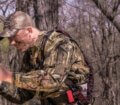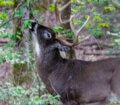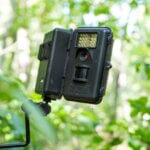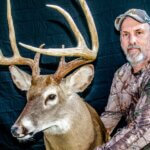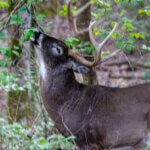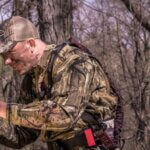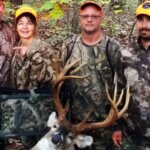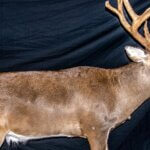Editor’s Note: Michael Perry of Vinemont, Alabama, a longtime, successful public-land deer hunter who’s taken more than 79 bucks on public lands through the years, with 38 of them being 8-pointers or better, explains, “My trail cameras are an integral part of my scouting program.” But Perry doesn’t use trail cameras like most deer hunters do. He’s only taken four bucks that he’s seen previously on trail camera pictures before he’s taken them. Perry says, “Most of these bucks I’ve taken, especially the most mature bucks, I’ve never seen before I’ve released my arrow or squeezed my trigger. However, my trail cameras have told me the trails are where those mature bucks are most likely to be.”
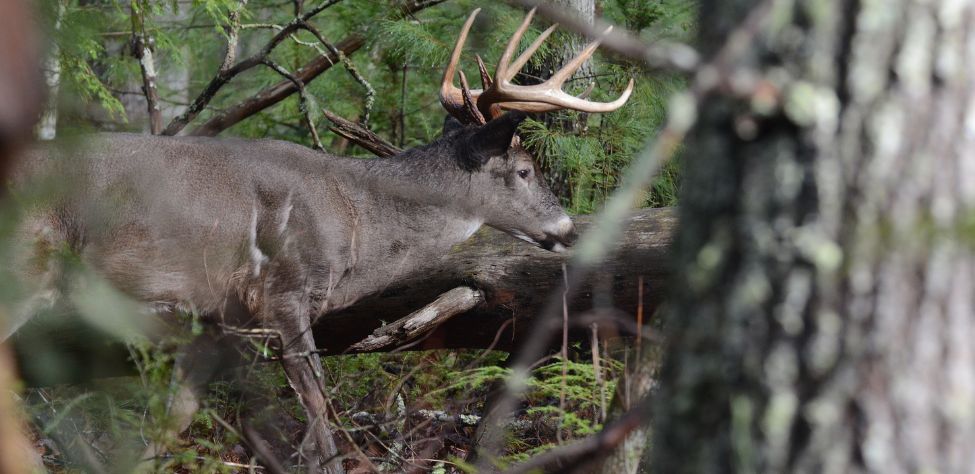
My purpose for trail cameras is for them to verify the type of bucks I hope my stand sites may produce. I never put my trail cameras out over bait or food plots. Instead, I set up my trail cameras at pinch points, creek crossings, funnel areas, bluff gaps, and edges where two different types of terrain meet. I’ll place my trail cameras in regions where I think I eventually may want to put up a tree stand.
Every year, I’ll put my new trail cameras out or may move my other trail cameras to new sites when I’m doing my postseason scouting in February and March. Before I hang the trail cameras, I’ll spray the camera’s straps with Sawyer’s Permethrin to keep the bugs and spiders out of the lockbox. I’ll leave the cameras out until July or August. I then look at the pictures on the cards and may see bucks in the velvet. But I’ll realize those bucks are maybe 1-1/2 miles away from where the camera has taken their pictures by the time hunting season arrives. Then, I replace the cards, install new batteries, and leave the cameras up throughout hunting season. I don’t check them again until the season is over. So, I leave my cameras out for the entire year.
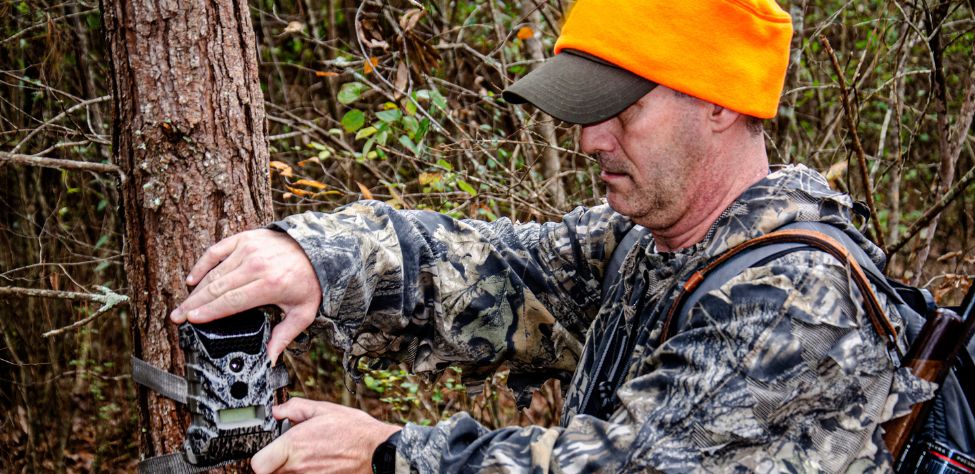
Since I primarily hunt during the rut and the pre-rut, the main thing I want to know is if bucks are using the trails where I have my cameras placed. During hunting season, I hunt the rut in each of the four wildlife management areas (WMAs) I hunt. The deer on each of those WMAs rut at different times during hunting season, depending on where the deer came from to be restocked, starting in the late 1920s, since the State of Alabama bought deer from brokers nationwide. In my preseason scouting, I’ll search for big deer tracks and droppings along the trails I’ve learned deer are using from my trail cameras..These two signs are the most reliable to show where older age-class bucks travel.
I’m often asked, “How often do you see the buck you’re trying to take on your trail cameras?” Not very often, although sometimes I’ll get trail-camera pictures of good bucks. However, I rarely get a picture of the buck I want to take. I’m hunting invisible bucks that I may not see ever, or perhaps only see once in several seasons, or may get a photo of them on trail cameras at night but never see them in daylight hours.
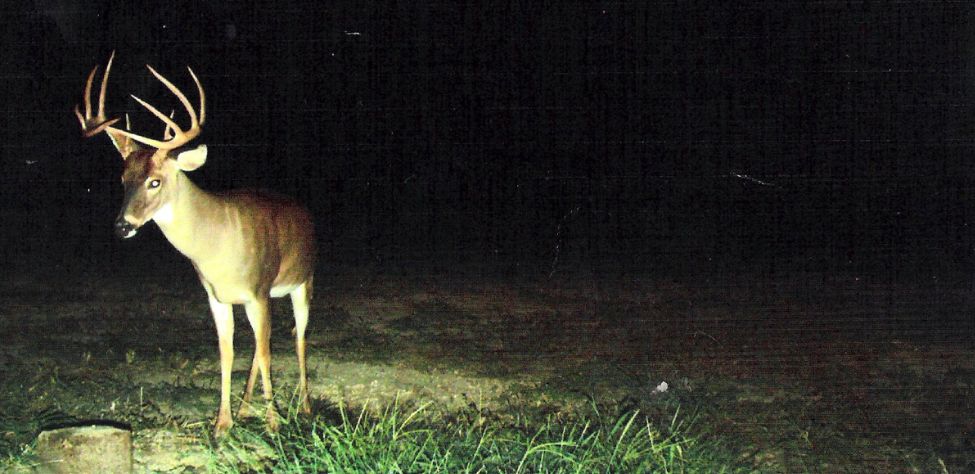
Another question I’m often asked is, “Why do you think you’re not getting trail-camera pictures of the older-age-class bucks you do take?” If I get trail camera pictures of fairly good bucks on a trail, I already know that during the rut, better bucks will often use these same trails to locate estrous does.
Looking for more content? Check out our YouTube channel and watch “Why Find Where Hunters Hunt” by John E. Phillips.
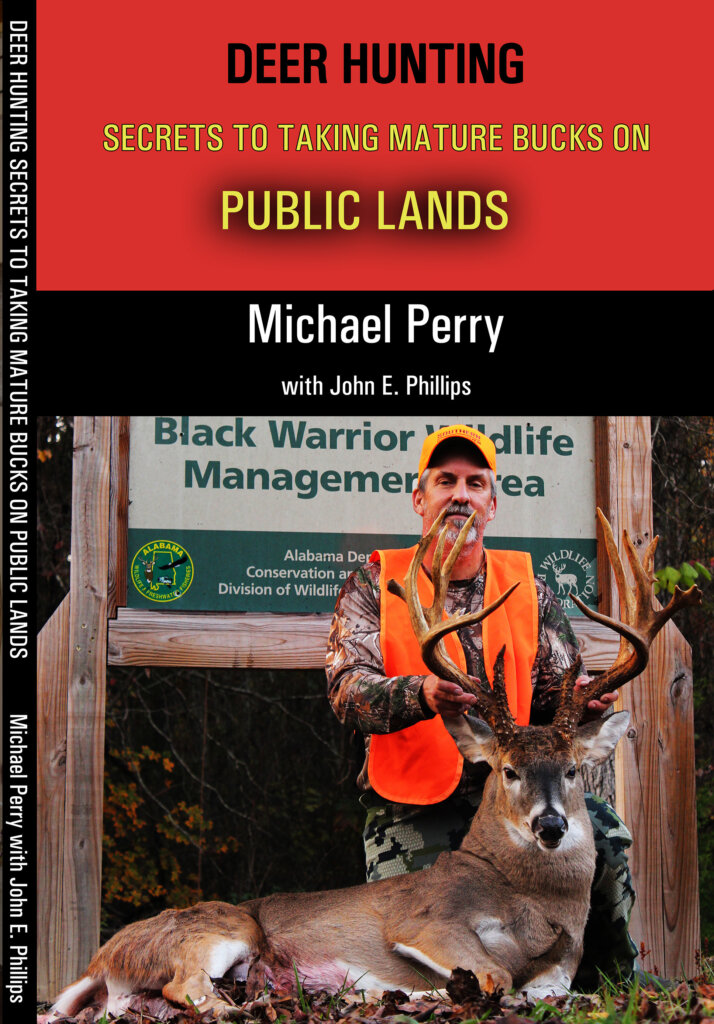

How to Hunt and Take Big Buck Deer on Small Properties
In this book, you’ll hear from 14 hunters who either have gained permission or leased properties as small as six acres to as much as 250 acres, and how they consistently take older-age-class bucks off these little lands.
VERSIONS: AUDIBLE, KINDLE & PRINT

Jim Crumley’s Secrets of Bowhunting Deer
Using a black magic marker and a gray work jumpsuit, Jim Crumley of Buchanan, Virginia, drastically changed the nature and purpose of hunting camouflage when he created the first sportsman’s camouflage – Trebark. Crumley’s love of bowhunting and his desire to be more invisible changed hunting clothing forever.
In this hunting guide, he shares the wisdom that he’s learned throughout his lifetime about how to be a hunter, how to find a deer lease, how to scout for deer, and more.
Special features include how to:
- Have a magic 60 acres to hunt
- Decide the best equipment to use
- Find deer year-round
- Locate land to hunt
- Know the best place to put your tree stand
- Get bucks within bow range
VERSIONS: AUDIBLE, KINDLE & PRINT

How to Hunt Deer Like a Pro
How do you know if the land you hunt has a trophy deer on it? Wildlife manager Bob Zaiglin, of Uvalde, Texas and Jim Crumley, the father of modern-day hunting camouflage, tells you how to find out. GPS can make finding and taking that trophy buck easier. This hunting guide will teach you how to hunt big bucks where no one else can find them, how to call deer, and how to become versatile as a deer hunter, so that if one deer tactic doesn’t work, another one will.
In the chapter, “How to find Bucks at Scrape,” Dr. Keith Causey, retired professor of Wildlife Science at Auburn University, describes the best way to hunt a scrape.
Brad Harrison of Neosho, Missouri, is a nationally-known videographer, professional deer hunter and master at calling deer. Another master is Will Primos of Primos Game Calls. These two experts will tell the best deer calls and when to use them in this book.
And for over 20 years, Bo Pitman, lodge manager of White Oak Plantation, has been studying deer movement patterns. He explains what types of conditions are best for predicting deer movement.
VERSIONS: AUDIBLE, KINDLE & PRINT

Deer hunting and deer hunters are drastically changing each year. To learn new techniques for hunting deer and have more places to hunt, I’ve interviewed some of the best deer hunters in the nation and share their tactics in How to Hunt Deer Like a Pro: Volume II.
In Chapter 10, Jacob Lamar tells you his tactics for consistently taking older-age-class bucks on public lands in several states. Chapter 11, Bob Walker explains how to find places on public lands where you can hunt that 99 percent of the other hunters never have considered hunting. The Bonus Chapter with David Ramey tells you how, where, when and with what equipment to take big Kansas bucks on public lands by hunting in 100-degree weather when others won’t hunt.
Chapter 13, Mark Drury, his family and his guests take mature bucks every season by having more small places to hunt rather than one large property. Drury explains the strategy of having satellite farms to hunt that only may be 50-150 acres each or less. Chapter 15, Pat Reeve, who hunts far-northern states and Canada, says, “I don’t like hunting for mature bucks until the weather is 20 degrees or less.” Chapter 4, Dr. Larry Marchinton says that funnels are the most-reliable stand sites to hunt for big bucks and tells why.
VERSIONS: AUDIBLE & PRINT
Tomorrow: Why Learn Deer Information from Trail Cameras

